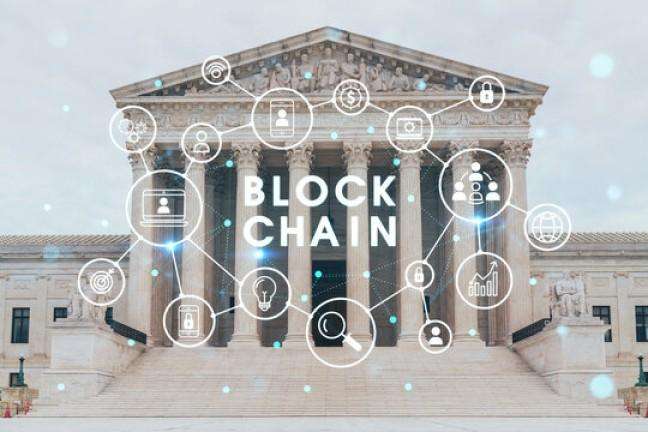In the rapidly evolving world of blockchain and cryptocurrency, one of the most significant challenges remains how regulators approach the various types of tokens that emerge from this space. With blockchain technology gaining mainstream adoption, it’s essential to establish a securities law framework that governs the creation, distribution, and trading of blockchain tokens. In this article, I will explore the legal landscape surrounding these digital assets, focusing on how securities laws intersect with blockchain tokens and how businesses and investors can ensure compliance.
To understand the role of securities law in the regulation of blockchain tokens, we need to break down some basic concepts first. Securities laws are designed to protect investors by ensuring that they have access to full and fair information before making investment decisions. These laws typically apply to any financial instrument that can be traded or has an investment component. When a token is created and offered to the public for purchase, there is a possibility it might be classified as a security, thus subjecting it to securities regulations.
I’ll start by defining what a blockchain token is, then discuss the criteria for determining whether a token is considered a security. I will also examine the various legal frameworks from different jurisdictions, primarily focusing on the U.S., and provide practical guidance for navigating this complex issue.
Table of Contents
What Is a Blockchain Token?
Blockchain tokens are digital representations of assets or utilities that exist on a blockchain. They can serve multiple purposes: they might be used as a currency (like Bitcoin), as a representation of an underlying asset (like tokenized real estate), or as a utility token within a specific network (such as Ethereum-based tokens used in decentralized applications).
Unlike traditional securities such as stocks or bonds, tokens can be issued on a blockchain without the need for a centralized intermediary. This decentralized nature raises a question: how should these digital assets be classified under existing laws, especially when they are used as investment vehicles?
Determining Whether a Blockchain Token Is a Security
In most jurisdictions, the primary test for whether a digital asset is a security is its purpose and how it is marketed. For instance, in the U.S., the Securities and Exchange Commission (SEC) uses the Howey Test, which originates from a 1946 U.S. Supreme Court case. The test determines whether an asset is a security based on the following criteria:
- An investment of money: The individual or entity must invest capital in the expectation of a return.
- A common enterprise: There must be a common enterprise, such as a shared pool of resources, that investors contribute to.
- An expectation of profits: The expectation of profits must be derived from the efforts of others. This typically means that the token issuer or a third party is responsible for the profits.
- Efforts of others: Investors rely on the efforts of the issuer or a third party to generate a return.
If a token passes these criteria, it’s likely to be classified as a security. This classification triggers a variety of regulatory requirements, including the need to register with the SEC or seek an exemption, as well as compliance with disclosure and anti-fraud rules.
Example: Tokenized Equity
Consider a company that offers tokens to investors in exchange for capital. These tokens represent a share of the company’s ownership, similar to how stocks work in the traditional securities market. The company’s success depends on its efforts (like launching products or acquiring customers), and the investors expect a return on their investment based on the company’s performance. This would likely be classified as a security under the Howey Test, as the token embodies all four criteria.
Regulatory Framework for Blockchain Tokens
While the SEC’s approach in the U.S. provides a framework for evaluating whether tokens are securities, different countries have different regulatory approaches. In the European Union, for instance, blockchain tokens are typically classified based on their utility, with certain types falling outside securities regulation.
1. U.S. Securities Law and Blockchain Tokens
In the U.S., the SEC has taken a cautious and evolving stance toward blockchain tokens. Many Initial Coin Offerings (ICOs) and token sales have faced scrutiny for failing to comply with securities laws. These companies often face enforcement actions for not properly registering their tokens or failing to offer the necessary disclosures to investors.
However, the SEC has also been pragmatic in recognizing that not all blockchain tokens are securities. For example, Ethereum (ETH) initially faced questions over its classification but was later determined not to be a security after a review by the SEC. The key takeaway here is that regulators look at the facts and circumstances surrounding each token offering, rather than applying a blanket rule.
The SEC has been clear that if a blockchain token is intended to be an investment vehicle, with the expectation of profits from the efforts of others, it is likely to be treated as a security.
2. European Union’s Approach
The European Union is still in the process of establishing a unified regulatory framework for blockchain and cryptocurrency assets. However, it has focused on the classification of tokens in the context of existing financial regulations, including the MiCA (Markets in Crypto-Assets) regulation. The EU’s approach is more focused on utility tokens and their functionality within specific ecosystems, distinguishing them from securities.
3. Asia-Pacific Region
Regulatory approaches in the Asia-Pacific region vary significantly. In countries like Japan and South Korea, blockchain tokens are subject to financial regulations, but the approach is often more favorable toward innovation. Japan, for example, has implemented a regulatory framework that requires cryptocurrency exchanges to register with the Financial Services Agency (FSA), which adds a layer of security for investors.
Key Considerations for Token Issuers and Investors
When launching a token, issuers must consider how they plan to market and sell their tokens. Here are some critical points to keep in mind:
- Token Classification: Determine whether the token is a security. This will help you understand whether you need to comply with securities laws and regulations. Consulting with legal experts is essential to avoid running afoul of the law.
- Jurisdictional Considerations: Tokens may be subject to different regulations depending on where they are offered. Issuers must be aware of the local laws in each jurisdiction where the token will be sold or marketed.
- Registration and Disclosure Requirements: If the token is classified as a security, issuers must comply with registration and disclosure obligations, including filing with regulatory bodies like the SEC and providing investors with relevant information.
- Exemptions and Safe Harbors: In some cases, issuers may qualify for exemptions or safe harbor provisions, which can reduce the regulatory burden. For example, in the U.S., Regulation D and Regulation A offer exemptions for certain types of securities offerings.
- Token Utility vs. Investment: Issuers should carefully distinguish between utility tokens (which provide access to a specific service) and investment tokens (which represent an ownership interest or revenue share). The former may not be subject to securities laws, while the latter almost certainly will be.
Example: Security Token Offerings (STOs)
Security Token Offerings (STOs) are a form of blockchain-based fundraising that is explicitly designed to comply with securities laws. In an STO, the tokens represent ownership in a company or project and are subject to the same rules as traditional securities offerings. This makes them more compliant with existing financial regulations but may limit the flexibility and innovation that ICOs have allowed.
| Type of Token | Is It a Security? | Examples | Regulatory Treatment |
|---|---|---|---|
| Utility Token | No | Ether, Filecoin | Exempt from securities laws |
| Security Token | Yes | Digital Bonds, Equity Tokens | Subject to securities regulations |
| Payment Token | Yes (in some cases) | Bitcoin, Litecoin | Can be classified as commodities |
| Hybrid Token | Yes (in some cases) | XRP, Tezos | Can be subject to both securities and commodities laws |
Conclusion: A Path Forward for Blockchain Tokens
The regulatory landscape for blockchain tokens is complex and rapidly changing. As blockchain technology continues to mature, the need for clear and consistent regulatory guidance is crucial. In the U.S., the SEC’s Howey Test offers a framework for determining whether a token is a security, but other jurisdictions may have different approaches. For issuers and investors, the key takeaway is that careful planning, legal consultation, and adherence to securities laws are critical for ensuring compliance and avoiding legal risks.
As I’ve discussed throughout this article, the classification of tokens as securities depends on various factors, including how the tokens are marketed and their purpose within the ecosystem. While some tokens will undoubtedly fall under existing securities laws, others may not, allowing for continued innovation in the blockchain space. Nonetheless, as blockchain technology evolves, so too will the regulatory framework, and staying informed will be essential for anyone involved in the world of blockchain tokens.





